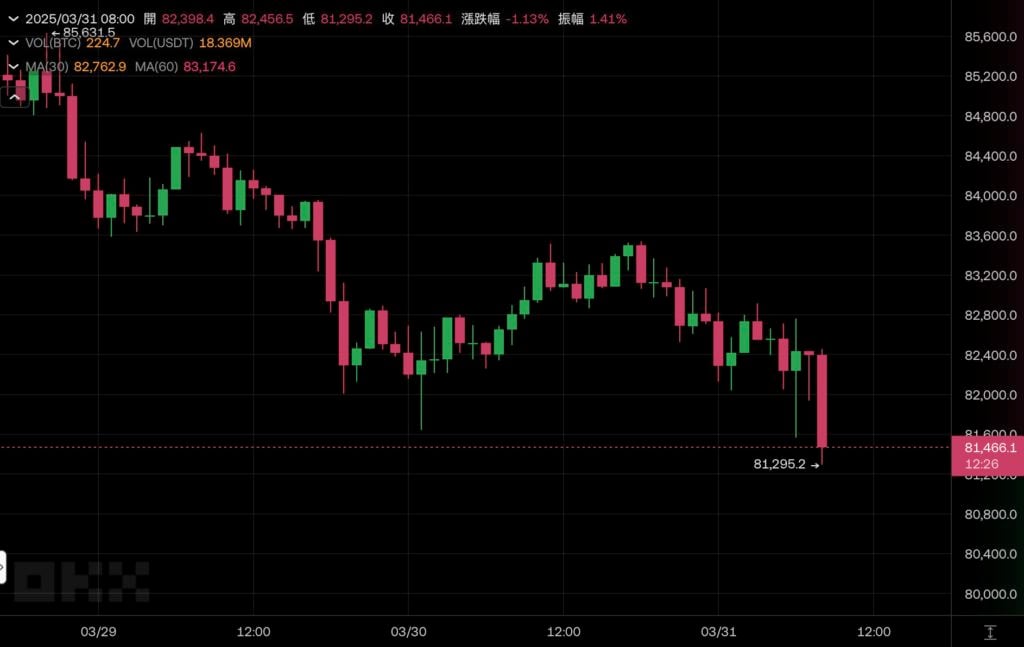This week welcomes a week filled with uncertainty, with US President Trump set to announce a series of major trade measures, including "reciprocal tariffs" on local time on April 2. Last Friday, panic over tariff uncertainty had already struck Wall Street, with the Dow Jones Industrial Average plummeting over 700 points.
In the Bitcoin market, the market continued to fluctuate and decline throughout the weekend, dropping to as low as $81,295, a 1.6% decline in the past 24 hours. Besides the US reciprocal tariffs, the US March non-farm employment report to be released this Friday and the Federal Reserve (Fed) Chairman Powell's public speech will also be key indicators for judging the direction of the US economy, inflation, and future monetary policy.

Analyzing Key Investment Considerations for the Coming Week
Trump's Trade War Drums Resound Again: 'Reciprocal Tariffs' Poised to Strike
Trump will announce a comprehensive set of trade countermeasures on April 2, with the core being the so-called "reciprocal tariffs". Trump has long argued that if a country imposes tariffs on specific US goods, the US should impose the same tax rate on goods of equivalent value from that country to achieve fair trade. He dramatically named this day "Liberation Day", suggesting that this move aims to liberate the US from what he calls unfair trade agreements.
Although Trump signaled last Friday (March 28) that he is open to negotiations on lowering reciprocal tariff rates, he also firmly set a bottom line: no agreements will be reached before the official announcement on April 2. This statement maintains a high level of uncertainty, leaving the market unable to predict the final impact and extent.
This trade tension has also put Taiwan on edge. According to data, Taiwan was the sixth-largest trade deficit country for the US last year. In this context, the central bank warns that it must carefully assess and proactively respond to the potential escalation of US-Taiwan trade disputes, conduct stress tests and contingency plans in advance to mitigate potential impacts on Taiwan's export industries and overall economy.
March Non-Farm Employment Report
This Friday (April 4), global attention will focus on the US Department of Labor's March non-farm employment report.
According to the median of economists surveyed by Reuters, the market generally expects the US to add 128,000 non-farm jobs in March. Although this number is lower than the 151,000 increase in February, if achieved or slightly exceeded, it might temporarily convince investors that the US economy has a certain resilience to withstand current pressures; but it also adds pressure on whether the Federal Reserve will cut rates.
Powell's Speech and Inflation Haze
Also on Friday, Federal Reserve Chairman Jerome Powell will deliver a public speech about the US economic outlook.What intensifies market concerns is that recent US economic data seems to point to a more tricky situation - stagflation, where economic growth stagnates or even declines, accompanied by persistently high inflation.
If Powell's remarks lean towards a hawkish tone, emphasizing the determination to fight inflation, it could suppress rate cut expectations and be negative for the stock market; if his tone is dovish, suggesting more concern about economic downside risks, it might boost market sentiment, but caution is still needed to avoid being seen as tolerating inflation.






